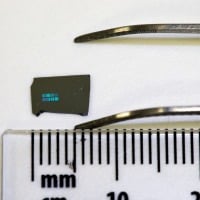Australian National University (ANU) academicians have created a material that permits brain cells to grow and establish predictable circuits. This breakthrough has the potential to spur the creation of prosthetics for the human brain. The research effort was a multidisciplinary approach combining elements of neuroscience with engineering and physics. Nanowires used for the project were fabricated by a team led by Professor Chennupati Jagadish from ANU’s Research School of Physics and Engineering.
How They did It
The ANU research team grew brain cells atop a semiconductor wafer rife with nanowires. The nanowires served as a scaffold of sorts to guide brain cell growth. Dr. Vini Gautam of ANU’s Research School of Engineering served as the lead researcher. She stated the nanowire scaffold provided a platform for the analysis of brain cell growth and how they connect to one another.
Why the Breakthrough is Important
This project provides insights into the generation of neuro-prosthetics that can help the brain rebuild itself after enduring damage as a result of an accident, degenerative neurological diseases, or stroke. It is the first study to display the neuronal circuits grown atop nanowire scaffolds were completely functional and delicately interconnected. This breakthrough creates the potential to use the scaffold design for neuro-prosthetics.
Dr. Vincent Daria of The John Curtin School of Medical Research served as the project’s group leader. She believes it will soon be possible to use the brain on a chip to gain an understanding of how neurons within the brain create computing circuits and transmit information. Neurons link to one another synaptically. This is the foundation for the processing of information within the brain during learning, cognition, sensory input and memory. The same connections are not required for prosthetics in artificial limbs.
The research team used specialized nanowire geometry to show neurons are deeply interconnected and generate functional circuits. It is critically important to establish the proper environment for neurons to be predictably linked into functional circuits. The researchers made predictive connections between the neurons. These connections were demonstrated to be fully functional while neurons were firing.
Where We go From Here
The ANU research team’s work might pave the way for a brand new research model. Such a new model would generate a formidable connection between neuroscience and materials nanotechnology. It is hoped that functional prosthetics for the human brain will be created in the near future.




